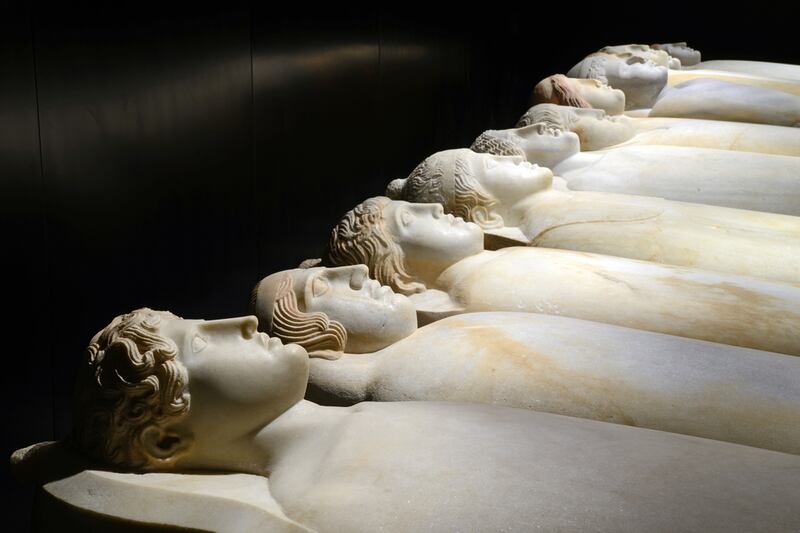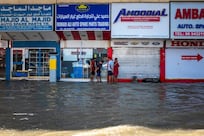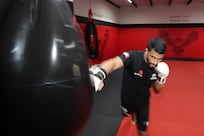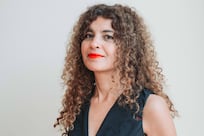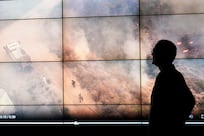The National Museum of Beirut was once one of the most dangerous places on Earth. Closed for over two decades as a result of the bloody Lebanese Civil War, it finally reopened its basement level this month after more than 40 years.
The museum was constructed between 1930 and 1937 to house a rich collection of artefacts from pre-history to the Ottoman period, all discovered on Lebanese soil. When the Lebanese Civil War broke out in 1975, the museum was on the infamous Green Line that divided East and West Beirut.
“The director of antiquities then, Maurice Chehab, decided very quickly to remove the small objects from the showcases and hide them inside boxes in the basement of the museum,” says the museum’s curator, Anne-Marie Maïla Afeiche.
“He put them on shelves and then he walled them off, so if you didn’t have the plan you couldn’t even tell that behind the wall the whole collection was protected … The bigger objects like the sarcophagi he couldn’t move, of course, so he decided to protect them by building a cement case around each and every one.”
Closed for two decades and occupied by snipers and militiamen, the museum building was a wreck, with bullet holes peppering the facade and holes in the walls and roof caused by shelling. The basement was flooded with 50 centimetres of water and the humidity had badly damaged some of the wooden and terracotta objects.
But, miraculously, almost everything survived the carnage. The ground floor and first floor of the three-storey building reopened in 1999, but the basement remained closed. This month, Lebanese prime minister Tammam Salam, minister of culture, Raymond Araiji, and Italian foreign minister Paolo Gentiloni, presided over its reopening.
The restoration project was funded by a €1.2 million (Dh4.7m) grant from the Italian government and supported by Italian conservators.
With softer lighting and a lower ceiling than the upper stories, the basement is now home to a spectacular collection of funerary art. Arranged chronologically, the 500-piece collection begins with a human tooth dating back 250,000 years, and finishes with Ottoman stone carvings from the 19th century.
The aim of the display is not only to show the archaeological artefacts, but to convey a sense of the rituals and burial practices of successive civilisations through reconstructions and video re-enactments.
Display cases show the objects interred along with the dead, including pottery, stone and ivory amulets and carved figurines, and jewellery and weapons.
Visitors can download a mobile app in three languages, which provides an overview of the museum’s history and collection, as well as an audio guide. Information about each display can be heard by scanning the QR code next to each showcase.
The highlight of the collection is a display of 31 anthropoid sarcophagi discovered in Sidon, south of Beirut. The white marble sarcophagi resemble mummy cases in shape, each bearing a unique, beautifully carved face, thought to be a portrait of the deceased.
“This is the largest collection ever displayed to date in a museum of anthropoid sarcophagi – from anthropos, so human face,” says Afeiche.
“All of them belong to the Phoenician period between the sixth and the fourth century BC. Each one has different features. Some of them are very Egyptian, while others look quite Greek already, and this is the particularly of Phoenician art, this mixture.”
Another highlight is an enormous painted tomb, which was discovered in the Tyre region in the far south of Lebanon in 1937, dating to the second century AD. The frescos, capturing scenes from Greek mythology, were removed and brought to Beirut, where they were placed in a reconstructed chamber.
On display for the first time is a collection of mummified bodies from the 13th century, discovered in the Kadisha Valley in North Lebanon in 1989. Lebanon does not have a history of mummification, but the dry conditions in the valley led to the natural preservation of these bodies, which were found in cotton dresses embroidered with silk.
Three of the eight mummies in the collection are on display in a side room – an adult woman and two children.
“All of them still have their hair, their teeth, their nails. Some have leather shoes,” says Afeiche. “In the cave we discovered wheat, raisins, nuts, laurel leaves, onions, spoons, combs – instruments of everyday life.”
She posits that the people, probably Maronite Christians, were hiding in the cave to escape persecution and died there.
Other notable artefacts include one of the earliest known paintings of the Virgin Mary, as well as Roman sarcophagi covered with intricate carvings.
Afeiche says that the reopening of the basement after 41 years is a message of hope at a time when regional conflicts in Iraq and Syria have seen the looting of museums and the destruction of priceless artefacts.
“Even when there is vandalism and conflict, there is always hope to be able to recover a whole collection, a whole museum, and to open it to visitors so they can recognise their history and their cultural heritage.”
artslife@thenational.ae
